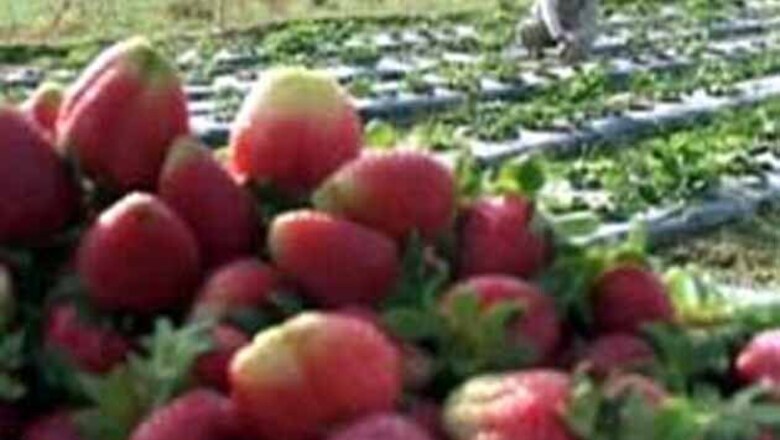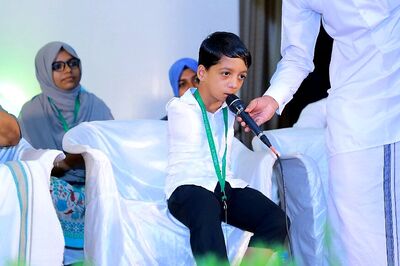
views
Washington: An international consortium of scientists has claimed to have successfully sequenced the genome of the wild strawberry in a breakthrough which could pave the way for breeding more tastier varieties of the fruit
and other crops in its family.
The research, published in the journal Nature Genetics,will help strawberry breeders to develop disease resistance and improve fruit quality to benefit consumers, said the scientists.
"We've created the strawberry parts list," said consortium leader Kevin Folta, an associate professor with the University of Florida's Institute of Food and Agricultural Sciences.
"For every organism on the planet, if you're going to try to do any advanced science or use molecular-assisted breeding,a parts list is really helpful. In the old days, we had to go out and figure out what the parts were. Now we know the components that make up the strawberry plant."
From a genetic standpoint, woodland strawberry, known as Fragaria vesca, is similar to the cultivated strawberry but less complex, making it easier for scientists to study.
According to the scientists, the 14-chromosome woodland strawberry has one of the smallest genomes of economically significant plants, but still contains approximately 240 million base pairs.
Once the consortium, which comprised of 75 researchers from 38 institutions, uncovered the genomic sequence of the woodland strawberry, Mark Borodovsky, a Regents professor, led the efforts in identifying protein-coding genes in the
sequence.
Using a newly developed pattern recognition programme called GeneMark.hmm-ES+, Borodovsky and his colleague Paul Burns identified 34,809 genes, about one and a half times the number humans have. Of them, 55 per cent were assigned to gene
families.
"GeneMark.hmm-ES+ is a hybrid programme that uses both DNA and RNA sequences to predict protein-coding genes," said Borodovsky, who is also director of Georgia Tech's Centre for Bioinformatics and Computational Genomics. Borodovsky developed the first version of GeneMark in 1993. In 1995, this programme was used to find genes in the first completely sequenced genomes of bacteria and archea.
The research team then developed self-training versions of the gene finding programme for prokaryotic - organisms that lack a cell nucleus - and eukaryotic (organisms that contain a cell nucleus) genomes in 2001 and 2005,respectively.
"Our approach to gene prediction in the strawberry genome proved highly effective, with 90 per cent of the genes predicted by the hybrid gene model supported by transcript-based evidence," added Borodovsky.
Further analysis of the woodland strawberry genome revealed genes involved in key biological processes, such as flavor production, flowering and response to disease. It also revealed a core set of signal transduction elements shared
between the strawberry and other plants.
The woodland strawberry is a member of the Rosaceae family, which consists of more than 100 genera and 3,000 species. This large family includes many economically important and popular fruit, nut, ornamental and woody crops,
including the cultivated strawberry, almond, apple, peach,cherry, raspberry and rose.
According to the researchers, their findings will help breeders to create plants that can be grown with less environmental impact, better nutritional profiles and larger yields.
"The wealth of genetic information collected by this strawberry genome sequencing project will help spur the next wave of research into the improvement of strawberry and other fruit crops," added Borodovsky.




















Comments
0 comment